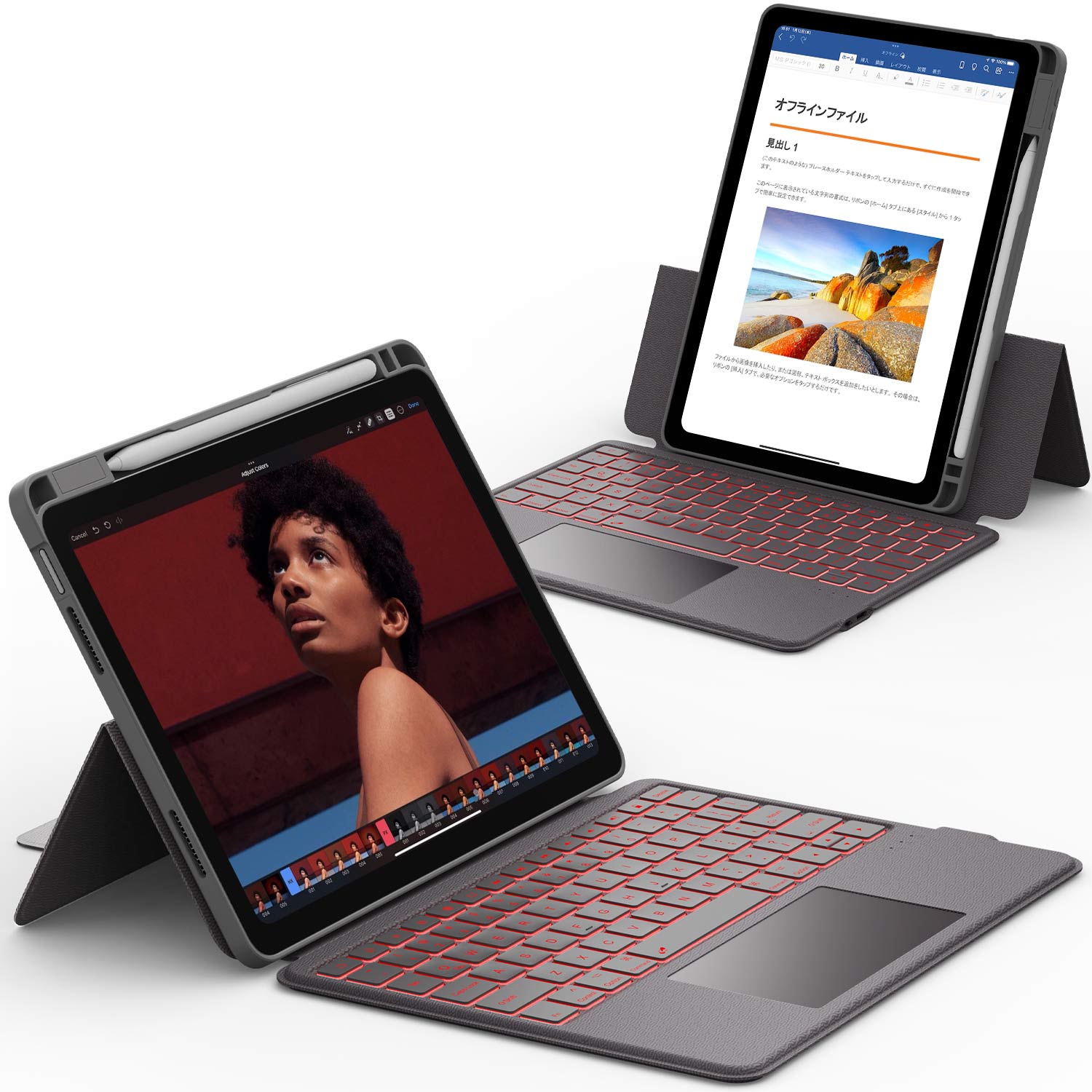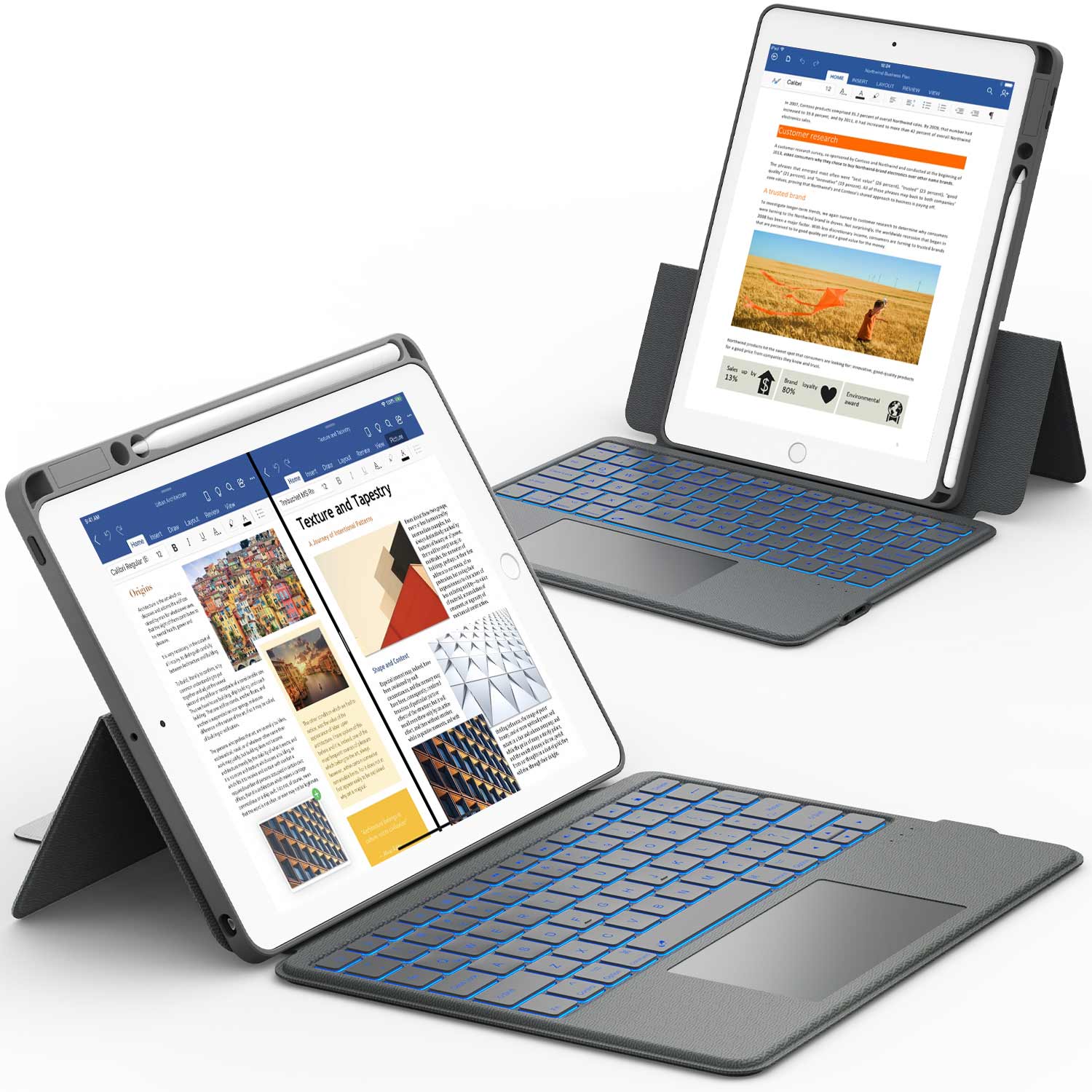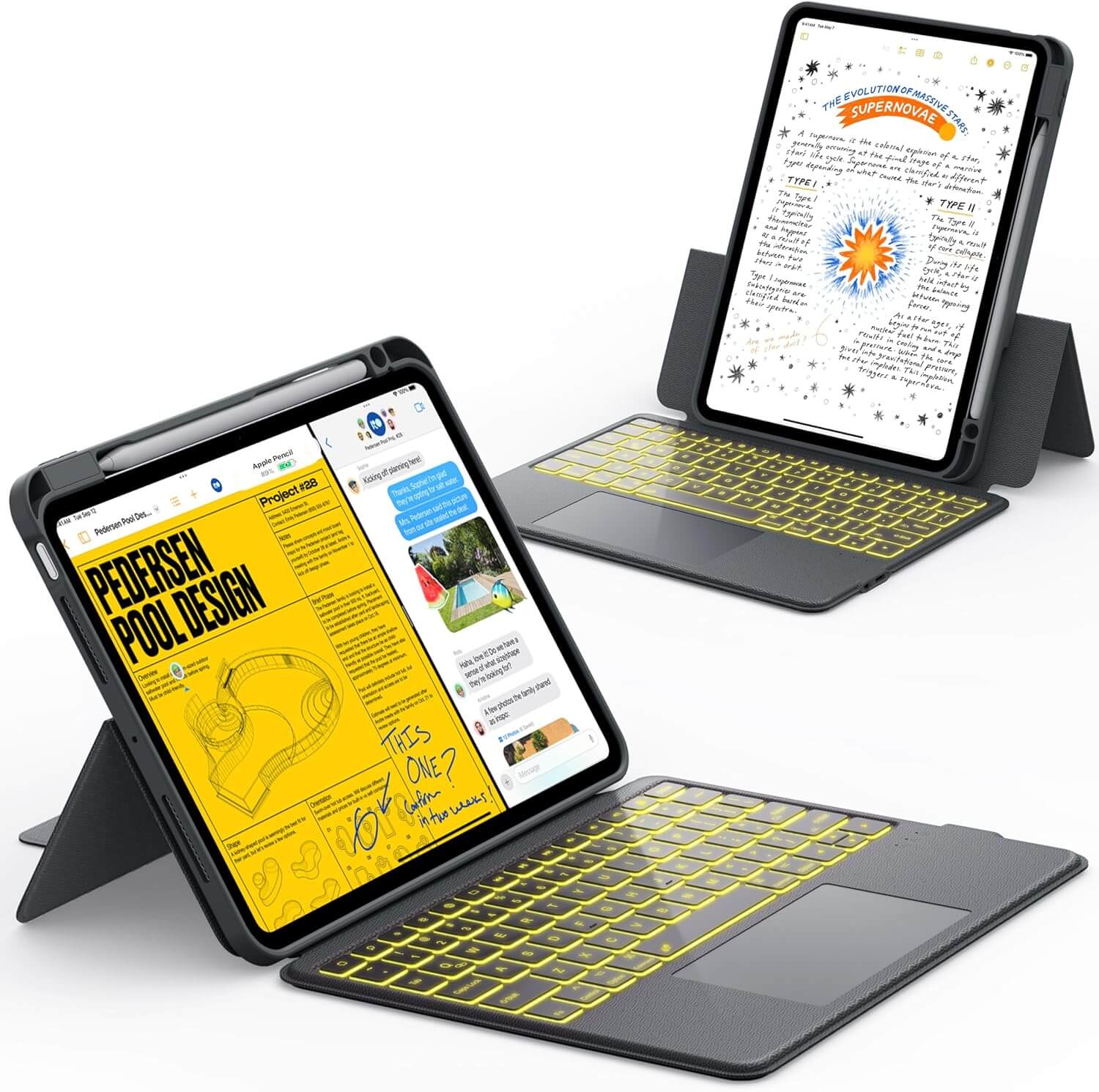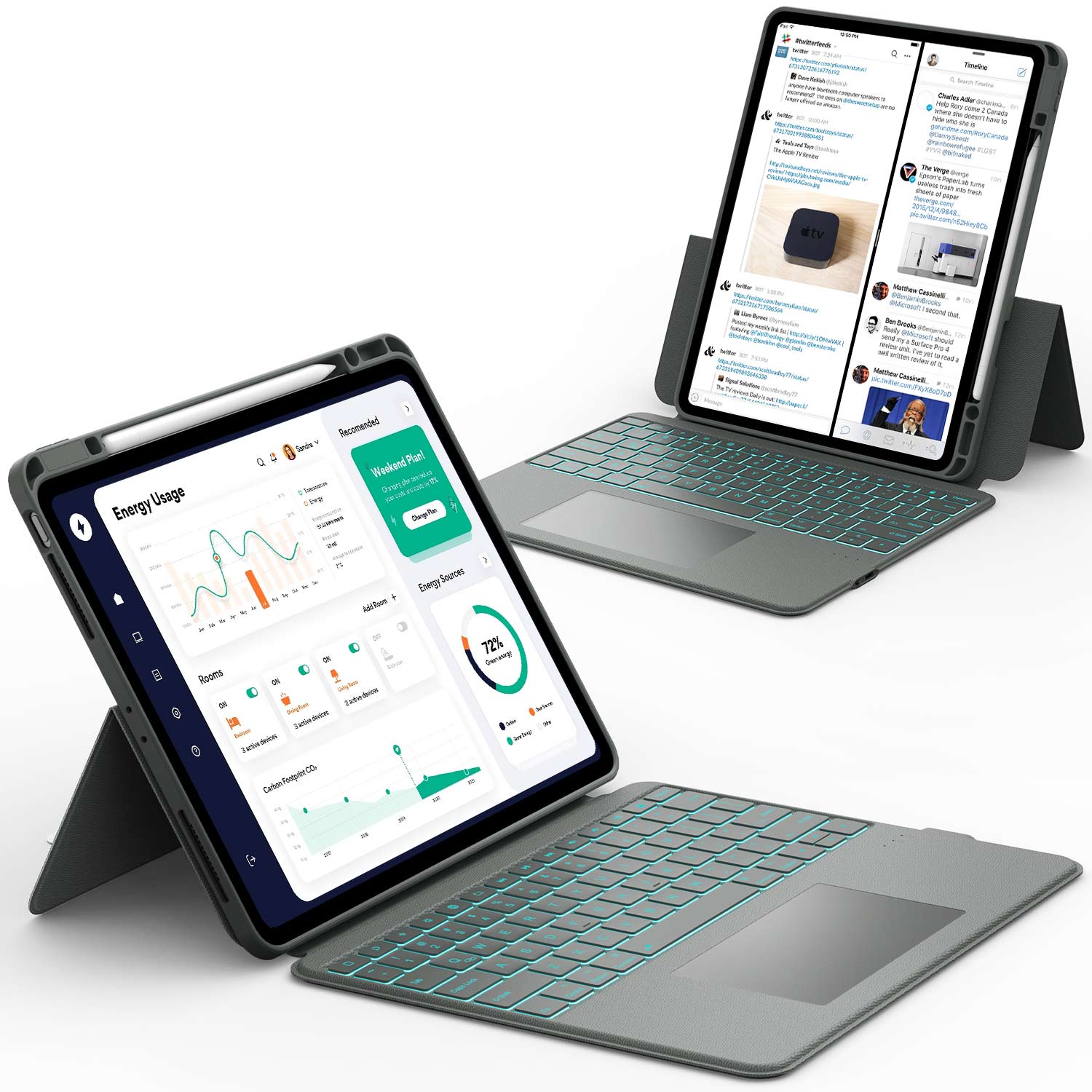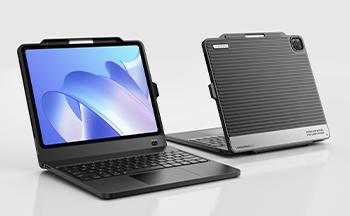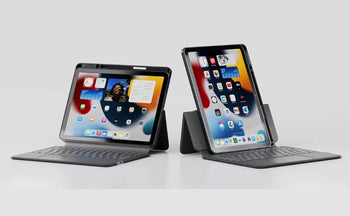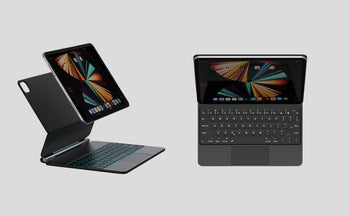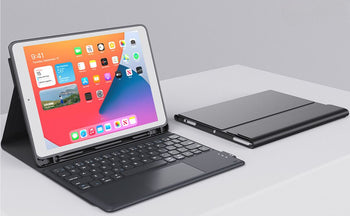Wondering what is the difference between an iPad case and an iPad cover? It's simple! An iPad case is like a full suit of armor that wraps around the back, sides, and sometimes the front of your tablet.
A cover is more like a shield that mainly protects just the screen. Cases give your precious iPad better protection from drops and bumps, while covers are lighter and mainly prevent scratches on your screen.
Your choice really depends on how you use your iPad: are you always on the go or mostly using it at home? Keep reading to discover which option is right for your iPad lifestyle and budget!
iPad Case vs. iPad Cover: Understanding the Basics

When shopping for iPad protection, you'll notice two main options: cases and covers. These accessories serve different purposes and offer various levels of protection for your device.
How iPad Cases and Covers Differ in Design
iPad cases typically wrap around the entire device. They cover the back and sides of your iPad, with some extending to protect the screen too.
Cases are usually made from materials like silicone, plastic, or leather. A cover, on the other hand, mainly protects the screen.
The most common example is Apple's Smart Cover, which attaches to one side of your iPad with magnets.
Covers are thinner and lighter than cases. Some covers can fold into different positions. This lets you prop up your iPad for watching videos or typing.
Cases might offer this feature too, but they focus more on full protection.
Protection Features: What Each iPad Accessory Offers
Cases provide more complete protection for your iPad. They shield the back and edges from scratches, dents, and minor drops.
Many cases have raised edges to protect your screen if you place it face-down.
Some premium cases offer extra features like the following:
- Water resistance
- Military-grade drop protection
- Built-in screen protectors
- Attachment points for straps or keyboards
Covers mainly protect your iPad's screen when not in use. They're great for preventing scratches on the display but offer little protection for the rest of your device.
Which Protects Your iPad Better: Case or Cover?
Cases generally offer more complete protection than covers. A full iPad case surrounds your entire device, protecting both the screen and the back. Cases are known for their tough, drop-resistant designs.
However, there are also covers that only shield the front of your iPad. It leaves the back and sides exposed to scratches and damage.
ESR cases protect the back of your iPad Air, while Apple covers typically only fit over the front. This difference is important if you worry about your iPad getting scratched when you set it down.
Many iPad users choose cases because they provide both protection and better usability.
Some people find it easier to hold their iPad with a case, especially when playing games like Call of Duty Mobile.
Pprotect your device before diving into the gaming world. Check out, Best iPad Apps for Gaming: Top Picks for Every Player to maximize your iPad gaming experience with the right protection.
iPad Screen Protection and Drop Resistance Compared
When it comes to screen protection, both options can help. A cover is good at stopping scratches on your screen. It can also shield your screen from objects that might hit it directly.
However, cases win for drop protection. A good case has padding on all sides to absorb shock when your iPad falls. The edges of a case also keep the screen from hitting the ground directly.
Some cases have raised edges around the screen. This extra protection helps if your iPad falls face-down.
Full cases may be bulkier than simple covers, but this bulk serves a purpose. The extra material acts as a cushion during drops and bumps.
Everyday Usability of iPad Cases and Covers

When choosing between iPad cases and covers, how they affect your daily use matters just as much as protection.
The right choice can make your iPad more comfortable to hold, easier to use, and better integrated with your accessories.
Weight, Bulk, and Materials: What to Expect
iPad cases come in many materials that affect how your device feels in your hands.
- Silicone cases add grip but can collect dust.
- Leather cases look nice but cost more.
- Plastic cases are light but might not protect as well as others.
Most cases add about 3-8 ounces to your iPad's weight. Slim covers add the least weight, while keyboard folios add the most.
If you carry your iPad all day, a lightweight option might be best for you. Thicker cases give better protection but make your sleek iPad bulkier.
Some people find this extra bulk helps them hold their iPad more securely. Others prefer thinner covers to keep their iPad slim and portable.
Smart Features and Stand Options for Your iPad
Many cases now include smart wake/sleep features that turn your screen on when you open the cover. This saves battery life and makes your iPad ready faster when you need it.
Stand options are super useful for everyday tasks.
Look for cases with:
- Typing angles (10-30 degrees) for using the keyboard
- Viewing angles (60-80 degrees) for watching videos
- Drawing positions for using Apple Pencil
Keyboard cases like the Magic Keyboard or Smart Keyboard Folio let you type quickly without carrying a separate keyboard. These are great if you write a lot of emails or take notes in class or meetings.
Apple Pencil Storage and iPad Accessory Compatibility
If you use an Apple Pencil, look for cases with a pencil holder or magnetic attachment. This keeps your pencil safe and makes it less likely you'll lose it.
Some cheap cases block the magnetic charging for 2nd generation Pencils. Port access is important too.
Good cases have precise cutouts for:
- Charging ports
- Speakers
- Volume buttons
- Camera lenses
Keyboard folios connect through the Smart Connector, avoiding Bluetooth pairing issues. When buying any case, check if it works with your exact iPad model and generation.
Cases for iPad Pro won't fit iPad Mini, and even cases for different generations of the same model might not work right.
Choosing Between an iPad Case or Cover

Picking the right protection for your iPad depends on how you use your device and what level of protection you need. The choice between a case and cover impacts both safety and usability of your iPad.
When You Should Buy an iPad Case Instead of a Cover
An iPad case is your best choice when you need full protection. Cases wrap around both the back and sides of your iPad, keeping it safe from drops and bumps. If you travel a lot or use your iPad outdoors, a case offers better protection than a cover.
Many iPad cases have extra features like built-in stands, pencil holders, or keyboard attachments. These make using your iPad easier in different situations.
If you have kids who use your iPad, a sturdy case is a must-have. Some cases are made specially for rough handling with thick corners and shock-absorbing materials.
Remember that cases add some bulk to your slim device. But this trade-off is worth it if you want to avoid cracks and scratches.
iPad Protection Options for Different Budgets
You can find iPad protection at almost any price point. Budget-friendly cases start around $15-20 and offer basic protection.
Mid-range options ($30-50) give you better materials and extra features like:
- Multiple viewing angles
- Auto sleep/wake function
- Water resistance
- Pencil holders
Premium cases ($60-100+) offer the best protection with high-quality materials like genuine leather or military-grade drop protection. These often last longer than cheaper options.
The best iPad cases aren't always the most expensive. Many affordable brands now make quality cases that protect well. Here’s an article if you want to browse the best ones available: Best iPad Air Cases (2025): Combining Style, Function and Protection
Think about how much your iPad is worth and how long you want your case to last before deciding what to spend.
Finding the Right Fit for Your iPad Model
iPads come in many sizes and generations. You must get a case or cover made specifically for your model.
Check your iPad model number before shopping. You can find this in Settings > General > About or on the back of your device.
Using this information, you can search for "cases for iPad model A2342" or whatever your specific model is. Pay attention to:
- Camera cutout position
- Charging port alignment
- Button accessibility
- Speaker openings
Universal cases rarely fit perfectly. They might block speakers or make buttons hard to press.
A well-fitting case should snap on easily without forcing it. Many best iPad cases come from brands that update their designs quickly when new iPad models release.
If you upgrade your iPad often, consider brands that offer trade-in programs for their cases.
Where To Get the Best iPad Cases

CHESONA ArmorDock Keyboard Case for iPad Pro
CHESONA offers premium protection solutions for all iPad models. Their magnetic iPad cases provide sleek protection with convenient attachment and multiple viewing angles. Need maximum protection? Their heavy-duty iPad cases offer drop-tested, water-resistant designs without sacrificing functionality.
For productivity, CHESONA's keyboard cases feature backlit keys, stain-resistant covers, and smart touchpads at competitive prices.
Ready to protect your iPad? Check out our collections of 9.7" iPad cases, 10.5" iPad cases, 10.9" iPad cases, 12.9 iPad cases, and magnetic iPad cases to find the perfect protection solution for your specific iPad model!
Conclusion
When choosing between an iPad case or cover, consider how and where you use your device most often.
Your iPad is an investment worth protecting—whether you need the rugged security of a full case or the elegant simplicity of a cover, the right choice will keep your device safe while enhancing your user experience.
Want more options? Check out our guide Best iPad Pro Case: Protection Without Compromise to find the perfect case for your specific needs.
Frequently Asked Questions
How do I know what case fits my iPad?
You need to know your iPad's model number to find a case that fits perfectly. Look on the back of your iPad for small text that includes the model number starting with "A."
You can also find this info by going to Settings > General > About on your iPad. Many case makers list compatible iPad models on their packaging or website descriptions.
Do all iPads use the same case?
No, iPads come in different sizes and designs, so cases aren't universal.
Each iPad generation and model (like iPad, iPad Air, iPad Pro, or iPad mini) needs its own specific case.
Even small changes between generations can make cases incompatible. The placement of cameras, speakers, and buttons often changes with new models.
How do I know what iPad I have to buy a case?
Check your iPad's model name by going to Settings > General > About. You'll see your iPad model listed there.
If you can't access your settings, look at the back of your iPad for the model number beginning with "A." You can search this number online to find your exact iPad model.
Do cases overheat iPads?
Most well-designed cases won't cause your iPad to overheat during normal use. However, thick, heavy cases that block air flow might trap heat.
If you use demanding apps like games or video editing for long periods, consider removing the case to help with cooling.
Some signs of overheating include your iPad feeling very hot, performance slowing down, or warning messages appearing.
Cases with metal parts can sometimes make heat problems worse. Silicone and leather cases typically allow better airflow than thick protective cases.
